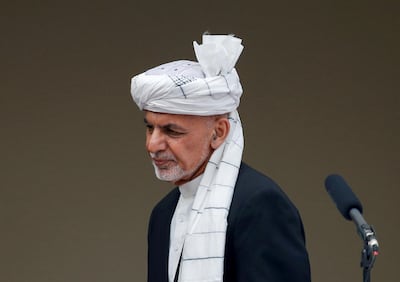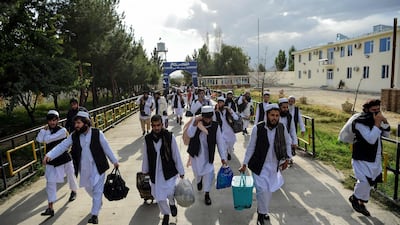When Afghan President Ashraf Ghani recommended the first-ever ceasefire with the Taliban in 2018, many Taliban fighters and Afghans did not know what to expect. Few seemed to know or remember what it was like to live in a peaceful Afghanistan in which war was not waged on a daily basis.
This made the prospect of a truce, however brief, extremely thrilling. Even before the ceasefire began, some Afghan soldiers rode their vehicles into Taliban-controlled territory to greet the fighters. At the same time, insurgents cautiously ventured into the cities controlled by the government, where civilians welcomed them with colourful garlands and heartfelt embraces so familiar to Afghans. Young people, including many women, approached the fighters, many of whom were also young, for selfies and conversations on ending the war.
For three days, all Afghans broke bread together, raising hopes for a future of peace. But shortly after the historic truce ended, the Taliban launched attacks on government checkpoints across provinces in the north and west of the country.
A second ceasefire this May held for a few days before lapsing. And so lasting peace continued to evade Afghans.
Last week, the Taliban called a third ceasefire for the occasion of Eid Al Adha. It got off to a rough start. A car bomb explosion in the Logar province, near the capital, exploded just hours before it was due to start, and resulted in the deaths of 40 civilians.
The truce concluded on Sunday, with 38 incidents of violence being reported across provinces. Nearly 60 civilians were killed, all of them attributed to the Taliban. This does not include an 18-hour-long attack launched by the Afghan branch of ISIS, which claimed 20 lives in the Nangarhar province.
The US, which reached an agreement with the Taliban on February 29 to bring about a reduction of violence in Afghanistan, has put on a brave face through all of this. But it is difficult to deny that its deal is barely holding up. If anything, the insurgents have provided ample evidence that they do not take peace efforts seriously.
After countless meetings, negotiations and three ceasefires, the Taliban continue their campaign of bloodshed.
In its latest report, the office of the US Special Inspector General for Afghanistan Reconstruction (SIGAR) elaborates upon the Taliban’s inability to adhere to the conditions of the deal, which included a commitment to cut ties with foreign terror groups – especially Al Qaeda. Among other things, SIGAR cites a UN monitoring report stating that the Taliban’s relationship with Al Qaeda remained “close, based on friendship, a history of shared struggle, ideological sympathy and intermarriage”.

The Taliban have also failed to reduce violence to help pave the path for talks with the Afghan government. While the deal did not set any specific, quantifiable targets for violence reduction, it is clear that the Taliban's efforts in this regard have not been credible. The SIGAR report, citing the Nato-led Resolute Support mission, concluded that Taliban "violence levels stayed well above historic norms" for most of the last quarter. It also documented a massive spike – 59 per cent – in civilian casualties in the past three months.
The US Department of Defence provided a similar assessment. In fact, the deadliest week for Afghan forces in the entirety of the last 19 years of war occurred between June 14 and 21 of this year, when the Taliban carried out 422 attacks in 32 provinces, killing 291 Afghan security personnel and injuring 550 others.
These figures should be enough to alarm the US administration about the future of peace talks in Afghanistan, and by extension its 19-year-long investment in the stability of the country it has occupied since 2001, when it overthrew the very Taliban it is negotiating with today.
However, despite the disturbing figures, the US has continued to withdraw its troops. At the same time, it has urged the Afghan government to release Taliban criminals in Afghan prisons, to fulfil another part of the February 29 deal – to which, incidentally, Kabul was not a signatory.
It ought to be no surprise, then, that the Afghan government approaches the negotiating table with the utmost caution. While Mr Ghani has largely complied with the US request by releasing around 4,600 Taliban prisoners, 400 of the most dangerous convicted criminals remain incarcerated. The matter of their release was referred to the country's Loya Jirga, a grand assembly of politicians and community leaders, who on Saturday approved it. However, in their statement, the Jirga members laid down certain conditions, including long-term ceasefire, as well as national and international guarantees that the released members will not join battles again. They also added that the Taliban should stop conducting attacks under the flag of Islamic State Khorasan Province, indicating a lack of faith in the Taliban's ability to stop violence.
The Taliban had previously denounced the government's move to seek counsel from the Jirga and declared a “continuation” of war even though they never really stopped fighting, even during the ceasefire.
The rigid conditions they have set for starting talks with the Afghan government, coupled with its inability to uphold commitments made to the US, do not inspire confidence in their will to engage in sustainable peace efforts.
Nevertheless, peace-starved Afghans took the three days of merciful relief and celebrated Eid as well as the ceasefire, looking forward, even as they remain deeply suspicious of the Taliban’s willingness and ability to commit to long-term peace.
Ruchi Kumar is a writer based in Afghanistan and Turkey











